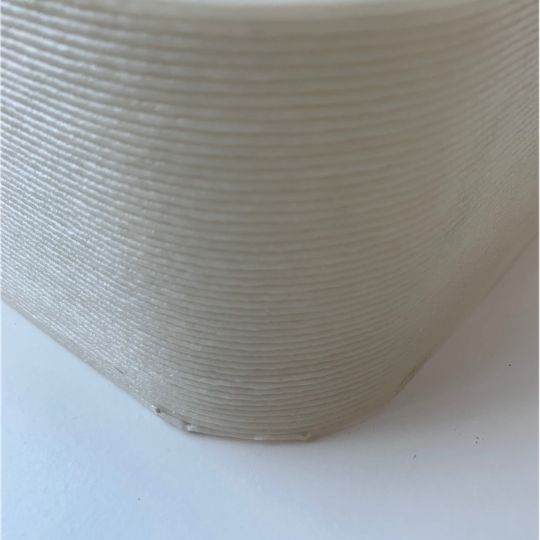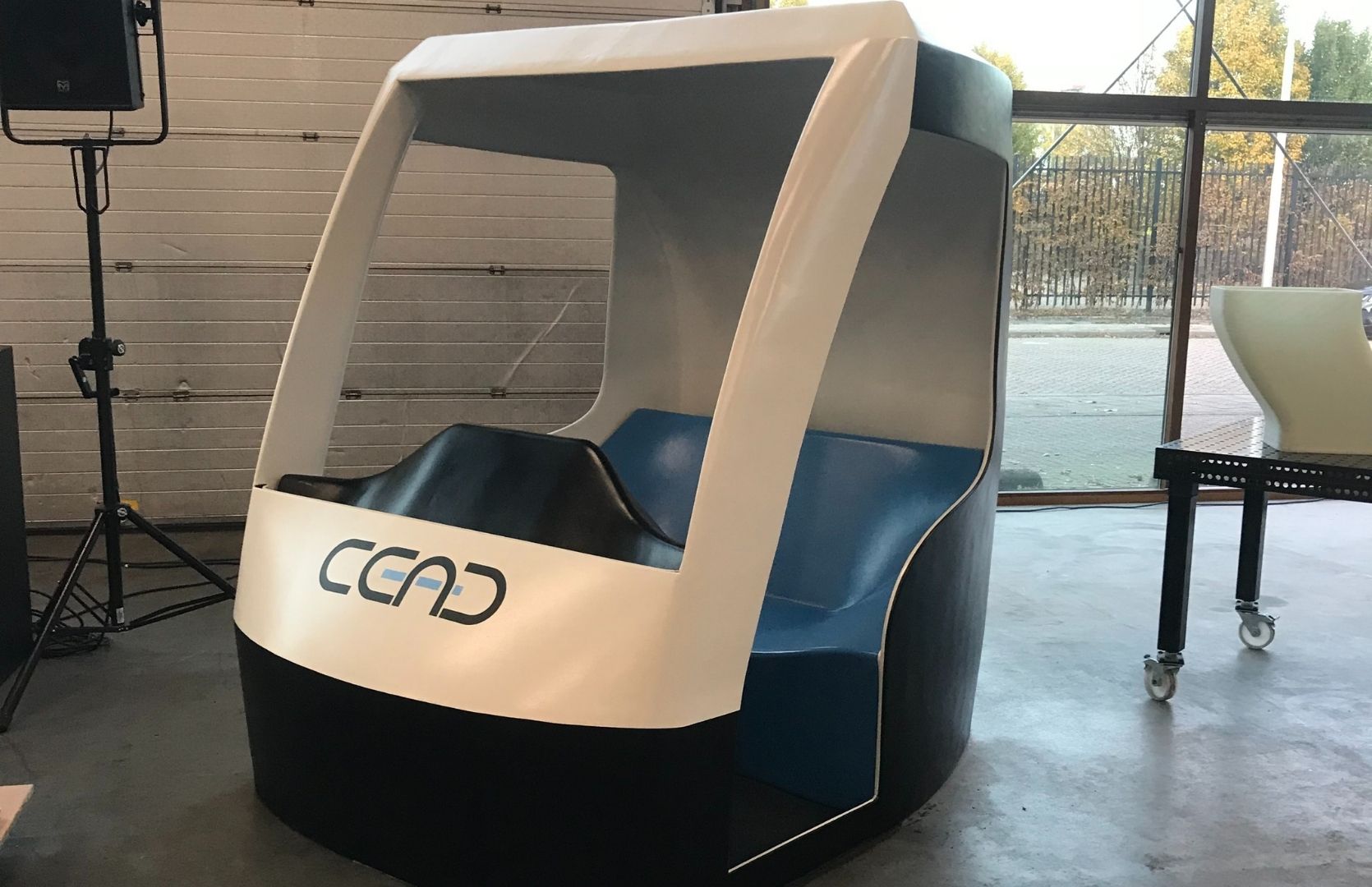CEAD’s large scale 3D printing technology uses thermoplastics. Thermoplastics are plastics that, after applying a specific heat, melt and can be reformed. These thermoplastics are used to a great extent in other processes such as injection moulding, plastic extrusion, rotational moulding, vacuum forming and in small scale printing such as FDM (extrusion based process) and SLS (laser Sintering process).
For larger parts, thermoplastics have not been used as much as steel, concrete and thermoset materials. When looking at large parts, it has been either rotational moulding, filament winding or ATP. With the addition of large scale 3D printing, more possibilities open up. It is therefore good to understand the expected behavior of these thermoplastics while 3D printing.
Generally speaking there are two main concerns with materials that have great influence on printability and deformation during the large scale 3D printing process. In this first blog about materials we give you two problem solving insights about: shrinkage and layer adhesion.
Preventing shrinkage to maintain a consistent 3D printing process
The first concern is shrinkage of the material. Large scale 3D printing is done in the free space and therefore nothing is constraining the material from deformation after it has been laid down. While the material is deposited while hot, it gradually cools down during the process. All materials shrink a bit. But when this shrinkage becomes too much, deformation can become uncontrollable or exceed certain limits which makes it hard to work with the material.
Generally speaking, the most efficient way to avoid this is by using fiber filled materials. The fibers reduce the shrinkage and make the material more stable during processing. The more fibers are in the material, the more stable it becomes. The effect of carbon fibers is in most cases greater than glass fibers, however in most cases all fibers do the trick: Natural-, Glass- and or Carbon fiber.

UPM Formi 20/19 – Bio based plastic with cellulose fibers from wood.

CEAD Basic Allround – Polypropylene with 30% short glass fibers.

MCPP PIPG30%GF – Post industrial PET-G with 30% short glass fibers.
Making sure the layers adhere to each other correctly to prevent deformation
The second concern with large scale 3D printing is layer adhesion. Layers are placed on top of each other, and during processing it is important to place the new layer on a still relatively hot previous layer. This previous layer can’t be too hot as it may be too liquid, which causes unwanted deformation under its own weight. At the same time the material should not be too cold because the layers need to fuse together to get good material characteristics.
With large scale 3D printing, the beads placed on top of eachother are relatively hot and have a lot of mass. This causes the previous layer to heat up to a certain extent. Of course, this heavily depends on the bead size. When printing with 4mm width and 1.5mm height, this is much more critical than when printing with 20mm width and 4mm height. Generally speaking glass fiber filled materials retain the heat better than carbon fiber filled materials, this means that glass filled materials need more time to cool down.

Polypropylene with 30% short glass fibers (CEAD Allround).
Shrinkage and layer adhesion affect each other
In the end, both challenges to prevent deformation during the large scale 3D printing process, affect each other. The shrinkage is reduced with adding a lot of fillers e.g. fibers. However, the more fillers, the less polymeric matrix remains.
When looking at layer adhesion, the fibers do not cross over to the previous layer as the fibers are pretty much aligned in the printing direction. This eventually means that when a material is filled with 50% glass fibers for example, only 50% polymeric matrix remains to take care of the layer adhesion. However, when a material has no fillers, this can be a 100% polymeric matrix taking care of layer adhesion. One can understand that having 100% material taking care of layer adhesion will give better results then only 50%.
This eventually causes the big differences between strength and stiffness in the XY opposed to the XZ plane. Where XY can be, for higher strength materials, in the range of 100-200MPa. The XZ often is only 20% of that. Typical strengths for thermoplastics without fibers are much lower, so without additional tricks the XZ values will always be lower than the XY.
Would you like to know more about materials for large scale 3D printing? Have a look at our material page or contact us to discuss the best possible material for your production.